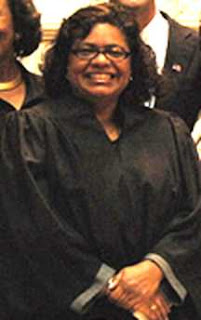Study highlights:
* African-American race is among the risk factors for developing dangerous blood clots after receiving a drug-coated stent.
* Despite taking anti-clotting medications as directed, African-Americans had more than double the rate of clotting compared to other races.
DALLAS, August 30, 2010 — African-American race is a distinct risk factor for developing life-threatening blood clots after receiving a drug-coated stent, according to research reported in Circulation: Journal of the American Heart Association.
African-American race was the strongest predictor of clotting that occurs more than 30 days after implantation, researchers said.
For the study, researchers examined data on 7,236 patients who had stents, coated with clot-prevention drugs, implanted to prop open narrowing arteries. The drug-coated stents, also called drug-eluting stents, were implanted between mid-2003 and the end of 2008.
Even after considering other known risk factors — such as diabetes, hypertension and kidney problems — researchers found that African-Americans still experienced a higher rate of thrombosis or clotting.
“The bottom line is this is not just because this population is sicker or less compliant, but there is something else there that needs to be explored,” said Ron Waksman, M.D., the study’s lead author.
In the study, African-American patients were nearly three times as likely to experience clotting as non-African-American patients. African-Americans’ clotting rates compared to non-African Americans were:
* 1.71 percent vs. 0.59 percent after 30 days;
* 2.25 percent vs. 0.79 percent at one year;
* 2.78 percent vs. 1.09 percent at two years; and
* 3.67 percent vs. 1.25 percent at three years.
The rate of death from all causes at three years was also higher among African-Americans, 24.9 percent vs. 13.1 percent in other races.
“Physicians and patients need to know that African-Americans are at a higher risk of developing stent thrombosis, which is associated with heart attack or death,” said Waksman, associate director of the Division of Cardiology at Washington Hospital Center and professor of medicine and cardiology at Georgetown University.
In the study, African-Americans had increased rates of stent thrombosis even though they took post-surgery anti-clotting medication as prescribed at a higher rate than other races.
Further studies are needed to determine what should be done to reduce the blood clotting risks in African-Americans, Waksman said. Possible genetic differences in the way African-Americans’ bodies react to the anti-clotting medication clopidogrel may have an impact.
Clopidogrel, a common drug prescribed post-stent implantation, carries a black box warning on its label from the Food and Drug Administration because the drug loses its ability to keep blood clots from forming in some patients whose bodies have trouble converting clopidogrel to its active form.
In some studies, researchers found that this genetic difference occurs more often in African-Americans than in white patients. Blood tests or genetic testing determine if someone is a “poor metabolizer” of clopidogrel.
More African-American participants are needed in key clinical trials to determine if the treatment works before a drug is on the market, Waksman said. “We are committed to further exploring these disparities and how African-Americans can benefit from drug-eluting stents without increasing the risk of stent thrombosis.”
Co-authors are Sara D. Collins, M.D.; Rebecca Torguson, M.P.H.; Michael A. Gaglia Jr., M.D., M.Sc.; Gilles Lemesle, M.D.; Asmir I. Syed, M.D.; Itsik Ben-Dor, M.D.; Yanlin Li, M.D.; Gabriel Maluenda, M.D.; Kimberly Kaneshige, B.S.; Zhenyi Xue, M.S.; Kenneth M. Kent, M.D., Ph.D.; Augusto D. Pichard, M.D.; William O. Suddath, M.D.; and Lowell F. Satler, M.D.
Author disclosures and funding information are on the manuscript. ###
Statements and conclusions of study authors published in American Heart Association scientific journals are solely those of the study authors and do not necessarily reflect the association’s policy or position. The association makes no representation or guarantee as to their accuracy or reliability. The association receives funding primarily from individuals; foundations and corporations (including pharmaceutical, device manufacturers and other companies) also make donations and fund specific association programs and events. The association has strict policies to prevent these relationships from influencing the science content. Revenues from pharmaceutical and device corporations are available at www.americanheart.org/corporatefunding.
NR10 – 1105 (Circulation/Waksman)





























